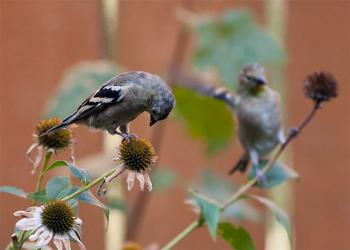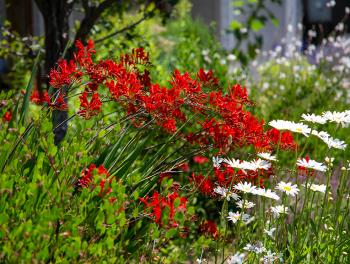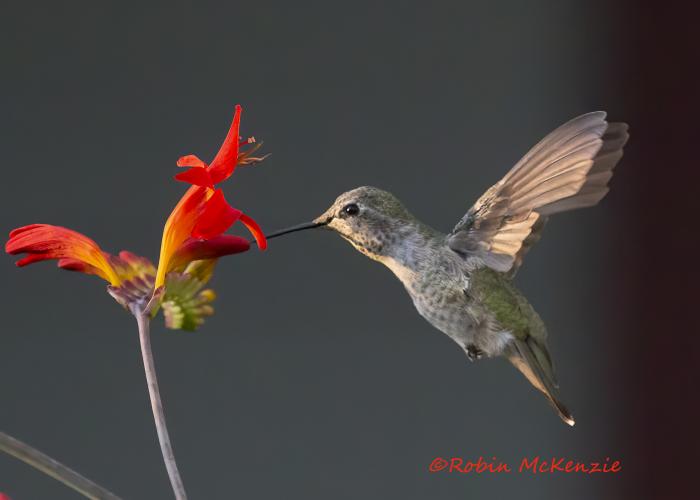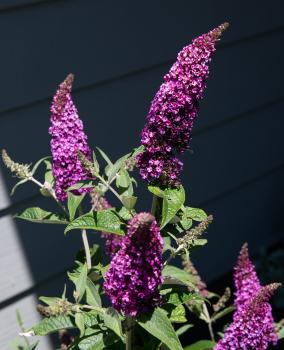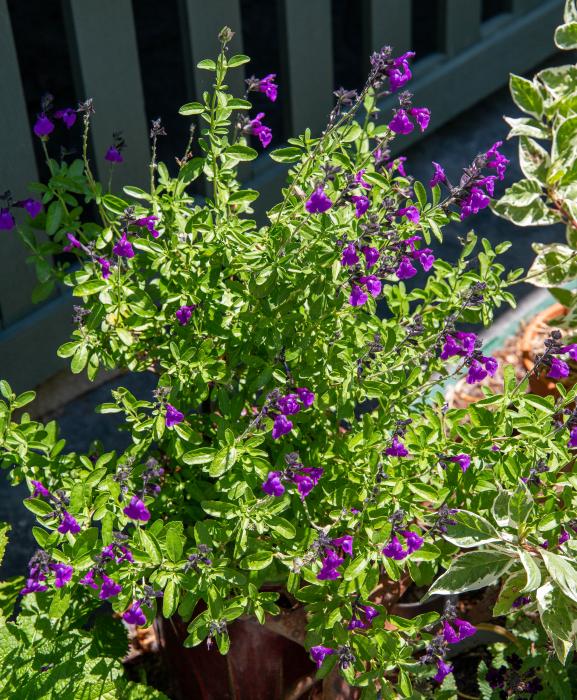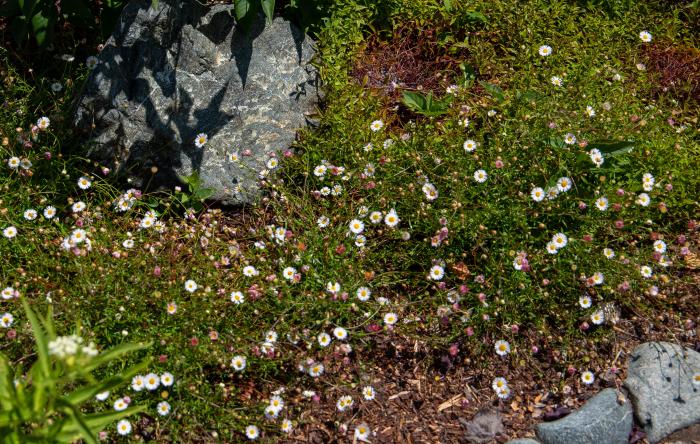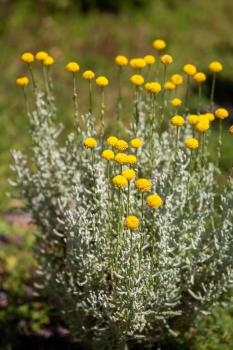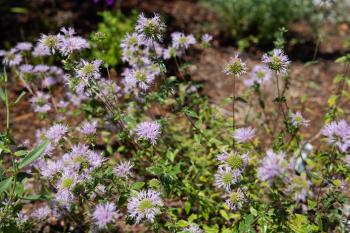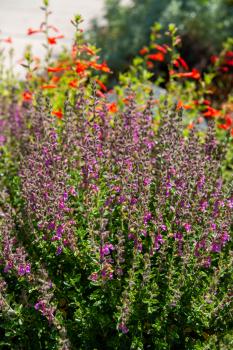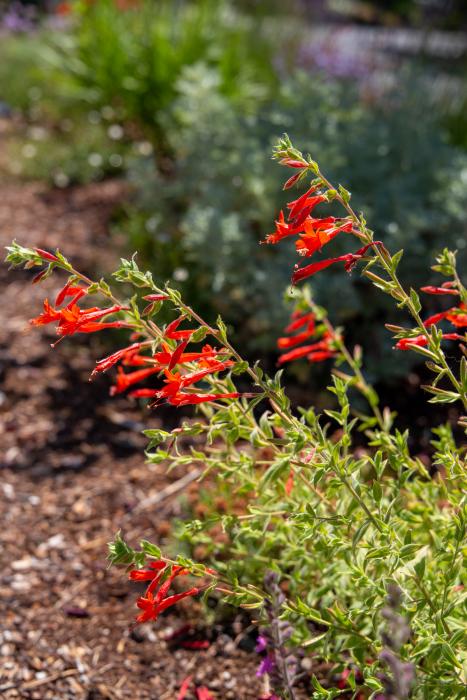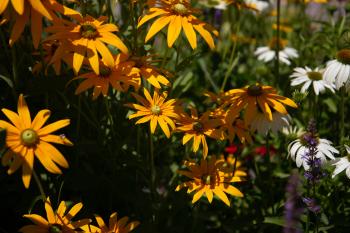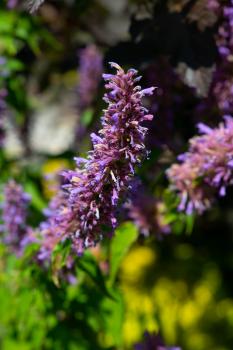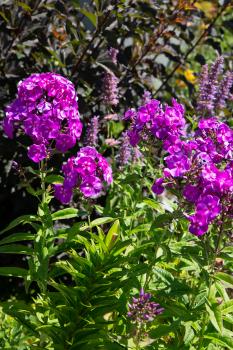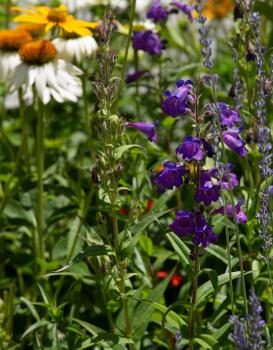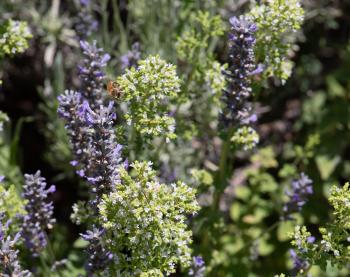Professional Native Landscape Design
Blog Post
Summer Blooming Garden
posted: July 23rd, 2020
Planning your Summer Pollinator Garden
Here's what's blooming in my garden in July. All of these perennials deliver long bloom periods and some keep going longer if dead-headed regularly. Most, if not all of them should be available in independent nurseries beginning in mid-June.This list is long, but even a small garden like mine seems to be able to accommodate them.
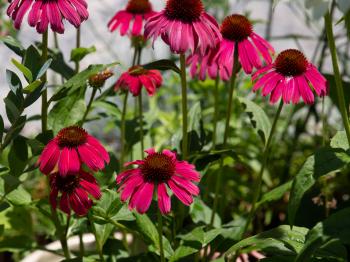
Echinacea
- Echinacea. Many of you have heard me say that echinacea or cone-flower is the perfect pollinator and bird plant. Native to the prairies and meadows of the Southeastern US, echinacea does best in full sun, tolerates drought and poor soils and thrives best in well drained soils. The flowers emerge flat like a daisy and then the cone rises, offering tons of nectar to bees and butterflies.
These beauties come in a wide variety of colors and sizes now. I have Cheyenne Spirit cultivars in several colors including Orange Sombrero and Tomato Soup, as well as Pow Wow White, and Wild Berry. The butterflies seem to prefer the louder colors and all are great cut flowers for your enjoyment indoors. Be sure to leave the spent flowers up. Even as they dry and go brown, the seeds are maturing and will be a welcome snack for finches in late Fall and early Winter.
2. Crocosmia. A real hummingbird favorite, this bulb grows 4' tall and can get very big unless divided every few years in Fall. Hummingbirds will spend hours drinking, guarding and fighting over these tubular flowers, but I have seen them share a large plant in the late evening. Crocosmia will begin the fireworks show just before the 4th of July and they'll last only a few weeks but are well worth it for the show.
I recently spent a few hours trying to capture a good photo of one of my favorite birds.
3. Asclepias - Milkweed. As a big supporter of the western Monarch population, I grow 4 different kinds of milkweed. This showy variety is tuberosa, an eastern US native. It seems to be very popular with bees as well. This year I've seen few Monarchs in the garden and none has decided to lay their eggs on all the milkweed I've grown from seed for them. Ascelpias tuberosa looks particularly great next to purple Agastache or late-blooming purple asters.
4. Buddleia - Butterfly Bush, or, more precisely, Sterile Butterfly Bush. Since Buddleia was declared an invasive species (it's from Asia) in both WA and OR, the clever folks in the nursery trade have bred several stunning varieties of sterile butterfly bush. I grow 3 of them, Asian Moon, which can reach 7'-8' in height, Miss Molly, a hot, fuschia pink variety that will attain 5', and Lo and Behold, a smaller plant of around 24" high and wide. All will keep attracting pollinators from early summer through fall if you keep them well dead-headed.
5. Salvia - Meadow Sage. There are 200 varieties of salvia available, but at this time of the summer, the ones you will find blooming will be the greggii, or autumn sage. One of the most reliable is "Hot Lips", a bi-color red and white flowering bush that can reach 30" tall and 6' wide. Native to Central Texas into Northern Mexico, these plants thrive in heat. I keep mine in the inferno strip. These salvias need little water but great drainage. I'll give it a drink once a week, maybe a bit more in extreme heat. If you love jewel tones, salvia greggii are for you. From sapphire blue "blue spires", to "Furmann's red", a true red, to "Amethyst Purple" these are the true jewels of the late summer garden.
6. Erigeron Kavinskianus - Santa Barbara Daisy. I'm sort of cheating with this one, because these hardy little clumps bloom from late April through frost. I like to shear them at least twice to keep them blooming and compact. There are some native tiny daisies, but this isn't one of them. Kavinskianus hails from Mexico, so it is well suited to dry condition but it begins to shut down flower production in the extreme heat of summer and thrives best in a coastal climates. Flower production picks back up in the early Fall.
7. Santonlina - Lavender Cotton. This Mediterranean (European) native is a truly drought tolerant plant! It needs full sun and very little summer water once established to achieve a 2'x 3' stature. Solitary yellow button flowers bloom on a 6" stalk from late Spring to mid-Summer. I love the gray-blue variety called "chamaecyparissus", (it's like a tiny blue false-cypress that blooms!) but it is also available in a more traditional yellow-green leaf called "Lemon Queen" whose flowers are more creamy in color. This plant is reliably evergreen and quite hardy in winter.
8. Monardella Villosa - Russian River Coyote Mint. Monardella Villosa is found growing naturally in oak woodlands and dry chaparral from southern Oregon south to Santa Barbara. You'll find it everywhere in the mountains above the Rogue Valley, especially in the dry areas between verdant meadows on the back side of Mt. Ashland. To me, the scent of Coyote Mint is the scent of hiking in the Siskiyous. You can find this particular variety, Russian River, at San Marcos Growers on line. I purchased this plant at Shooting Star Nursery in Central Point and have been very pleased to see it return each year. I don't give it much summer water, but I'm told it keeps the purple color longer with a bit of water.
9. Teuchrium chamaedrys - Germander. One of my favorite European native "herbal" plants for the pollinator garden. I use this jewel because it is reliably evergreen, cold hardy and blooms profusely for a very long period. This small shrub thrives in heat and grows about 2 ft tall and will spread to 3ft. You'll need to shear it back in late winter to keep it dense and neat looking. The latin word "germandra" means "oak" and may refer to the tiny leaves that resemble oak leaves.
10. Zauschneria - Epilobium canum "Everett's Choice" California Fuchsia. This is a ground-hugging sub-shrub that remains under 6" tall by up to 4' wide with fuzzy gray-green small leaves that deer seem to leave alone. Vivid orange tubular flowers invite lots of hummingbird visits, so be sure to keep the kitties indoors! Again, this is one of my "inferno strip" plants that is not on auto-irrigation, but will get fuller and more attractive with a bit of summer water. Very winter hardy. Purchased in the "native" area at Shooting Star Nursery. They have two varieties of Ca fuchsia at this time.
11. Salvia Gaurantica - Black and Blue Salvia. If you love blue flowers, as I do, you'll love this plant. Electric blue flowers contrast with the black stems of this late summer bloomer. Like all salvias, it's a sun and heat lover and is very drought tolerant. The trumpet-shaped flowers are probably pollinated exclusively by hummingbirds, since the bees tend to pierce the flowers at the top, thus avoiding the pollen. In recent years a dark amethyst hybrid called Amistad was discovered in a plant sale in Argentina in 2005. Not reliably winter hardy, if you afraid you might lose these beauties over the winter, grow it in a large pot and overwinter in the garage. Amistad was available exclusively on line until last year and can be found at both Valley View and Shooting Star nurseries.
12. Rudbekia hirta - Prairie Sun. This is my favorite variety of Rudbekia or Black-eyed Susan, because it has green eyes instead! Rudbekia tolerates heat, drought and a wide range of soils except poorly-drained wet ones. Easily grown from seed in late winter, these are sometimes planted as annuals, but they are very reliably perennial in my raised bed butterfly garden. Rudbekia blooms for many weeks and works well for cut flowers.
13. Agastache - Hyssop. A staple of the butterfly garden, you'll have to grow this wonderful herbal plant. Long blooming and native to northern North America, my favorite variety for long blooming and loads of nectar, is Blue Boa. Blue Boa grows about 3'-4' tall and will self seed in good conditions. Like the other types of mint, agastache needs really good drainage. There are several types of agastache which are also known as "hummingbird mint". That kinda says it all. You'll find huge meadows of agastache growing wild in the mountains above the Rogue Valley from July through August.
14. Phlox Paniculata, David - Tall phlox. This is a real staple of the butterfly garden because of all the tiny clustered blooms atop these 2'-4' plants. Butterflies seem to love them. This plant does best before the heat in the valley gets too intense. It needs more moist, rich and well-drained soil. I've got these purple ones in my raised beds and they get good, consistent water on the drip system.
15. Penstemon - Beardtongue. This is a genus of about 250 species of plants that are native to the continental US, Canada and Mexico. If you haven't gotten the theme yet, I really like blue and purple flowers and this variety fits the bill nicely. They have come back for the 3rd year, so I guess they like the partial afternoon shade afforded by the taller lavender they grow behind. Just make sure that they have plenty of drainage. Drainage, drainage, drainage! Prolong bloom by cutting off the spent stems which will keep the plant tidy after blooming as well. This one began blooming in late May!
16. Last, but certainly not least! Oreganum - Greek Oregano. This mediterranean herbal plant thrives in hot, dry conditions and spreads for a nice ground cover where other things just won't grow. Just don't let it get wet feet. It's evergreen and best cut back to the ground after bloom to control the spread by seed. If it's bees you want, this plant delivers from sunrise to sundown!




